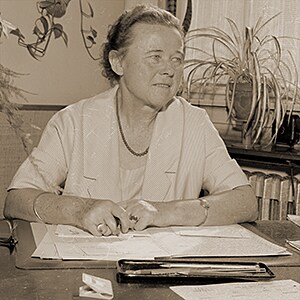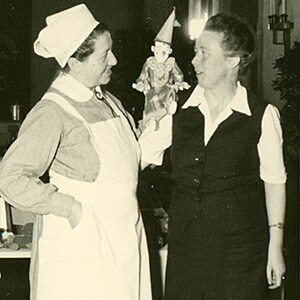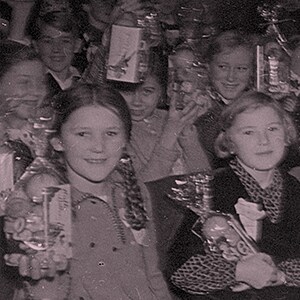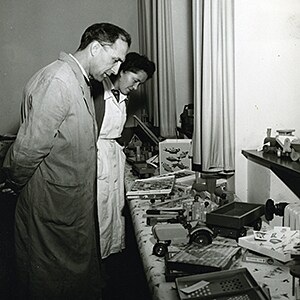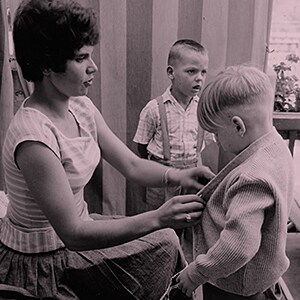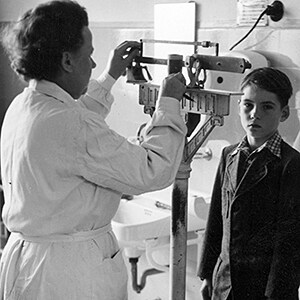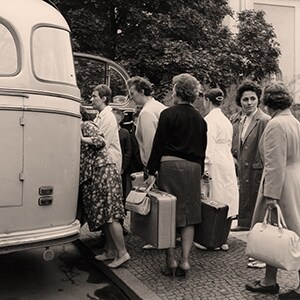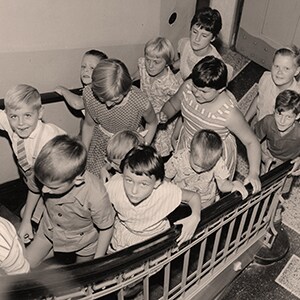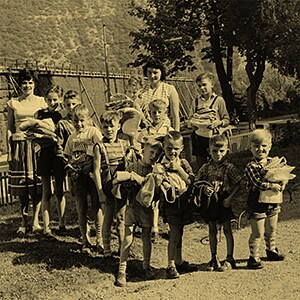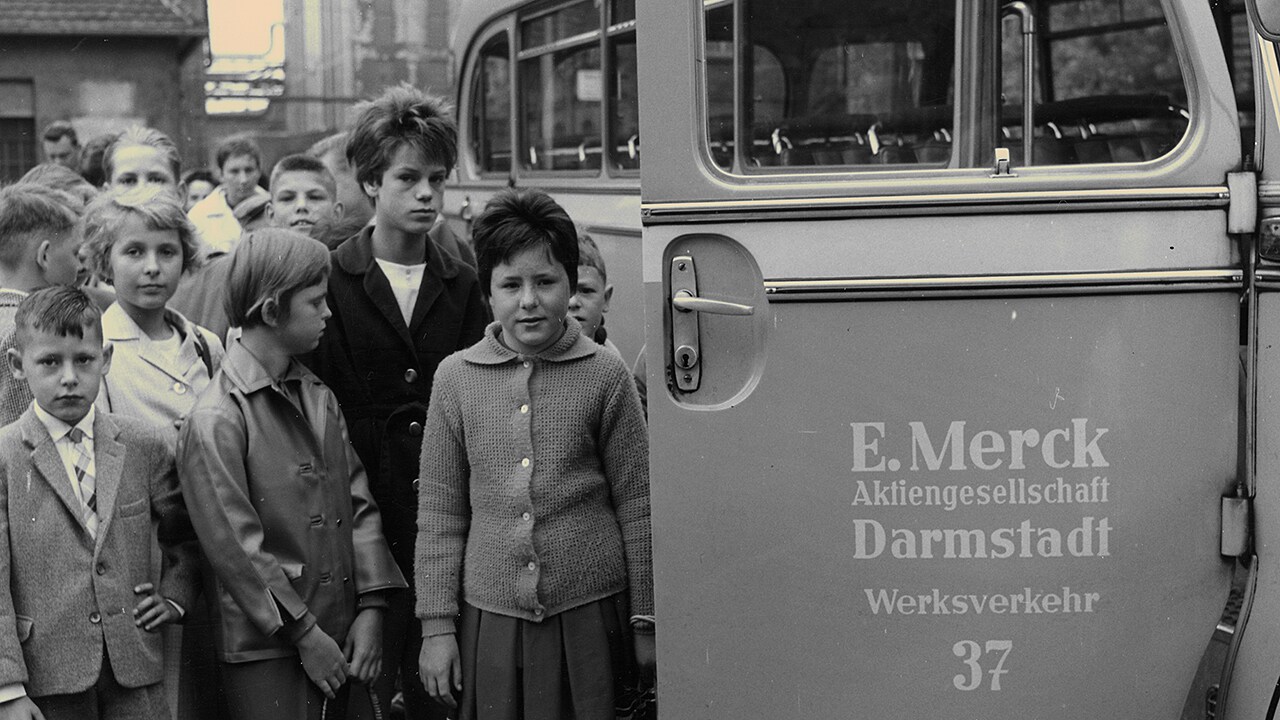
»The unwavering solicitude the owners of the company and their families extended to officials and workers […] can only be reciprocated through love, veneration and the most loyal devotion at work.«
Alexander Ehrenberg, Head of Research at the company, 1918
In the first half of the 20th century, the company is a family business that has a strong sense of tradition and is run by members of the eighth and ninth generations. The patriarchal corporate style typical of the day expresses itself in strong and generous social benefits bolstered by additional acts of charity. Driven by a sense of responsibility towards the workforce and their families during and after working hours, the company is at pains to provide assistance and mitigate any hardship.
In 1932, the company hires Grete Röper, a qualified children’s and postpartum nurse in addition to being a trained social welfare officer. The same year, Heinz Landmann, Head of the legal and social policy departments, tasks Grete Röper with setting up a new Social Welfare Department. With the establishment of a Social Welfare Department operating in close alignment with the company health insurance fund and reporting directly to the Executive Board, the company institutionalizes the employee assistance previously practiced on the basis of personal relationships.
Assisted by Ottilie Bell, Grete Röper attends to the health of female employees and the families of married male workers. The two social welfare officers visit female workers at their workplaces for a first-hand impression of working conditions and to address any grievances. In 1935, site management sets up an office where the welfare officers receive visitors every day. As many as 1,500 visits take place during the first six months alone.
The welfare officers’ purview extends beyond the factory gates to include house calls to the families of workers with children under 14, the main concern being health needs and socioeconomic living conditions. Röper and her team also checkin with sick female employees insured by the company health insurance fund, postpartum women and family members of workers who have been hospitalized. To resolve or at least relieve acute hardship, the welfare officers have access to funds from the foundations set up by members of the Merck family at the turn of the 20th century, namely the »Merck-Rieger Foundation« and the »Merck-Nothwang Foundation«. A third institution empowered to approve emergency funds for workforce members is the company assistance fund. The welfare officers issue recommendations which are then discussed and decided by the Executive Board.
Grete Röper joins the company in 1932 and is tasked with setting up the company Social Welfare Department. For 32 years, she and her coworkers attend to the needs of female workforce members, promote healthy workplaces and recreation areas for workers, supervise spa vacations for children and organize the first Christmas parties for kids.
The social welfare officers design exhibitions about »good toys« and learn of the troubles facing working families during their factory rounds, consultation hours and house calls, the social welfare officers. In collaboration with the company physician, they assess the health of children who are ill or failing to thrive prior to submitting benefit requests.
The »Merck-Rieger Foundation«, established in 1912 by Emanuel August Merck and his wife Elisabeth Merck, née Rieger, sends workers’ children in need of recuperation and mothers of large families on restorative vacations. The company assistance fund also provides funding for health spa retreats of this kind.

